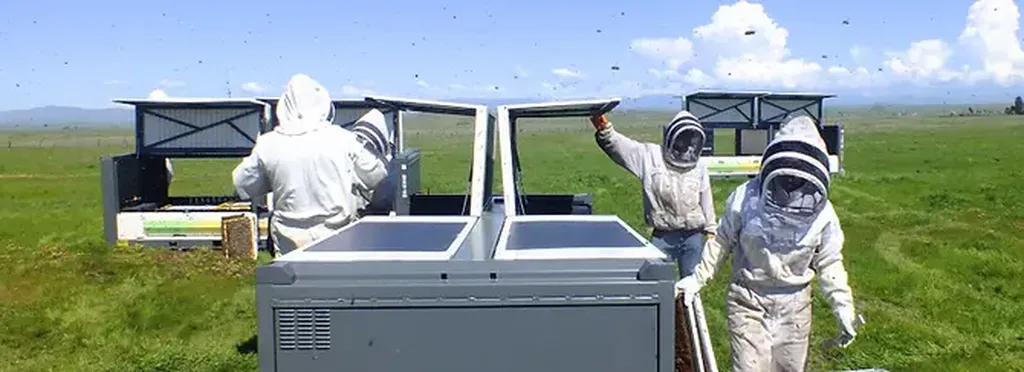In the heart of Romania, at the University of Agricultural Sciences and Veterinary Medicine Cluj-Napoca, a buzz of innovation is taking place. Not in the fields or the labs, but in the humble beehive. Dr. Tudor N. Ternar, a leading expert in apiculture from the Faculty of Animal Science and Biotechnology, is at the forefront of a technological revolution that could reshape how we understand and support one of nature’s most vital pollinators: the honeybee.
Imagine a world where every beehive is a smart hive, equipped with sensors that monitor colony health, behavior, and productivity in real-time. This isn’t a distant dream but a present reality, thanks to advancements in digital monitoring technologies. These innovations are not just about honey production; they have far-reaching implications for the energy sector, where bees play a crucial role in pollinating crops that contribute to biofuels and other renewable energy sources.
Ternar’s research, published in the journal Scientific Papers Animal Science and Biotechnologies, which translates to Scientific Papers Animal Science and Biotechnology, delves into the world of smart devices used in beekeeping. “We’re talking about non-invasive, cost-effective solutions that provide beekeepers and researchers with unprecedented access to colony dynamics,” Ternar explains. These sensor-based systems measure key hive parameters continuously, transmitting data to analytical platforms for in-depth processing.
The implications for the energy sector are significant. Healthy bee colonies mean more efficient pollination, which directly impacts the yield of crops used in biofuel production. By leveraging these technologies, researchers can refine apicultural practices, enhancing colony resilience in the face of climate change and intensive agricultural practices. This could lead to more sustainable and efficient energy production, a win-win for both the environment and the economy.
But the benefits don’t stop at the hive. These smart devices offer critical insights into honeybee behavior and survival mechanisms, areas where significant gaps in understanding remain. “Despite extensive research, there’s still so much we don’t know about how bees respond to anthropogenic stressors,” Ternar notes. By filling these knowledge gaps, researchers can develop strategies to improve hive productivity and reduce mortality, ensuring the continued health of bee populations.
The future of beekeeping is smart, and it’s happening now. As these technologies become more widespread, we can expect to see a shift in how beekeepers operate, moving from reactive to proactive management. This could mean fewer colony losses, higher honey yields, and a more robust pollination service for crops vital to the energy sector.
Ternar’s work is just the beginning. As more researchers and beekeepers adopt these smart devices, the data they collect will paint a clearer picture of honeybee health and behavior. This, in turn, will drive further innovations in apicultural practices, creating a feedback loop of improvement and adaptation.
In the end, the buzz in the beehive could power more than just honey production. It could light up the path to a more sustainable energy future. So, the next time you hear the hum of a bee, remember, it might just be the sound of innovation at work.

